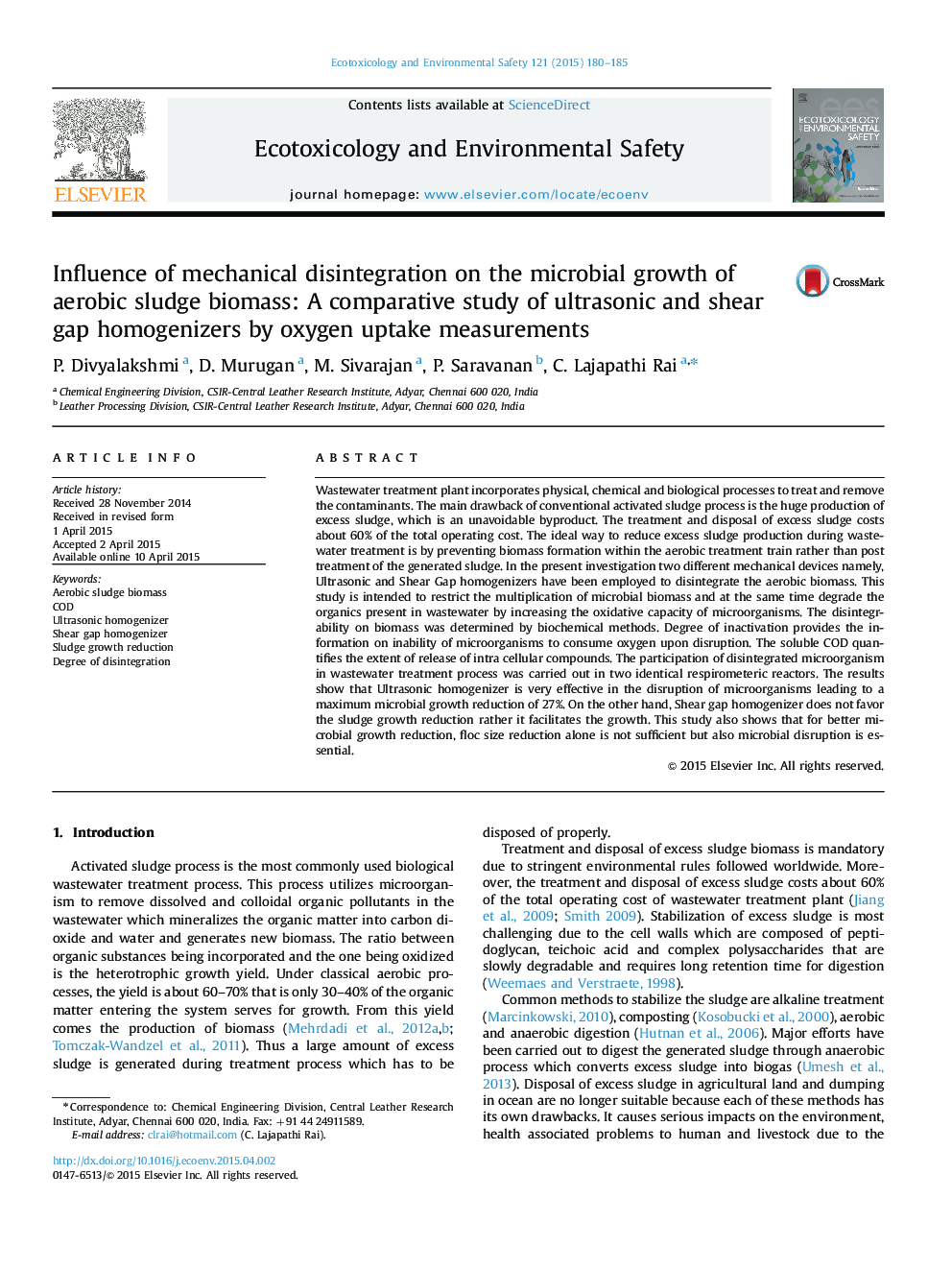| کد مقاله | کد نشریه | سال انتشار | مقاله انگلیسی | نسخه تمام متن |
|---|---|---|---|---|
| 4419311 | 1618942 | 2015 | 6 صفحه PDF | دانلود رایگان |
• Influence of disintegration on aerobic sludge biomass using two mechanical devices.
• Determination of excess Sludge Growth Reduction using respirometry technique.
• Comparison of the efficacy of two devices.
Wastewater treatment plant incorporates physical, chemical and biological processes to treat and remove the contaminants. The main drawback of conventional activated sludge process is the huge production of excess sludge, which is an unavoidable byproduct. The treatment and disposal of excess sludge costs about 60% of the total operating cost. The ideal way to reduce excess sludge production during wastewater treatment is by preventing biomass formation within the aerobic treatment train rather than post treatment of the generated sludge. In the present investigation two different mechanical devices namely, Ultrasonic and Shear Gap homogenizers have been employed to disintegrate the aerobic biomass. This study is intended to restrict the multiplication of microbial biomass and at the same time degrade the organics present in wastewater by increasing the oxidative capacity of microorganisms. The disintegrability on biomass was determined by biochemical methods. Degree of inactivation provides the information on inability of microorganisms to consume oxygen upon disruption. The soluble COD quantifies the extent of release of intra cellular compounds. The participation of disintegrated microorganism in wastewater treatment process was carried out in two identical respirometeric reactors. The results show that Ultrasonic homogenizer is very effective in the disruption of microorganisms leading to a maximum microbial growth reduction of 27%. On the other hand, Shear gap homogenizer does not favor the sludge growth reduction rather it facilitates the growth. This study also shows that for better microbial growth reduction, floc size reduction alone is not sufficient but also microbial disruption is essential.
Journal: Ecotoxicology and Environmental Safety - Volume 121, November 2015, Pages 180–185
